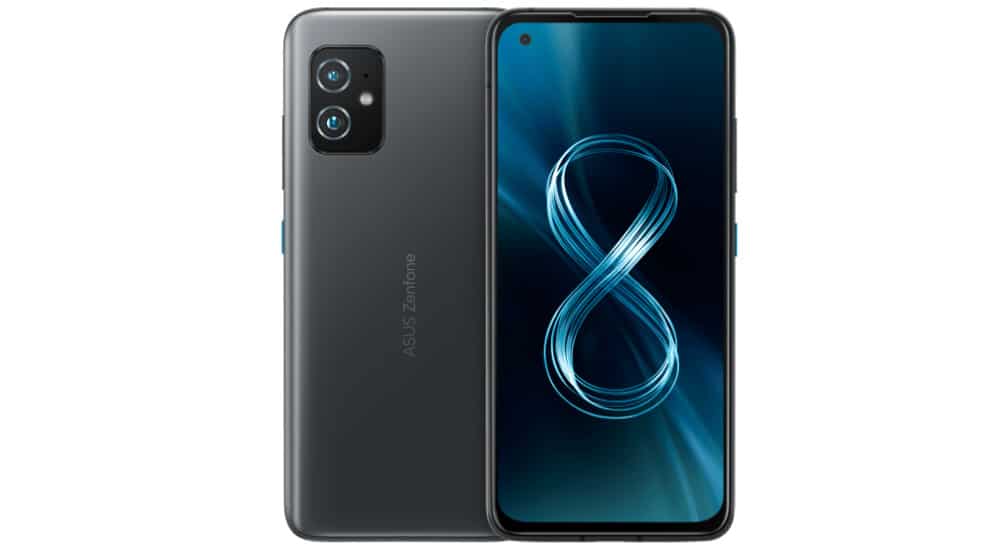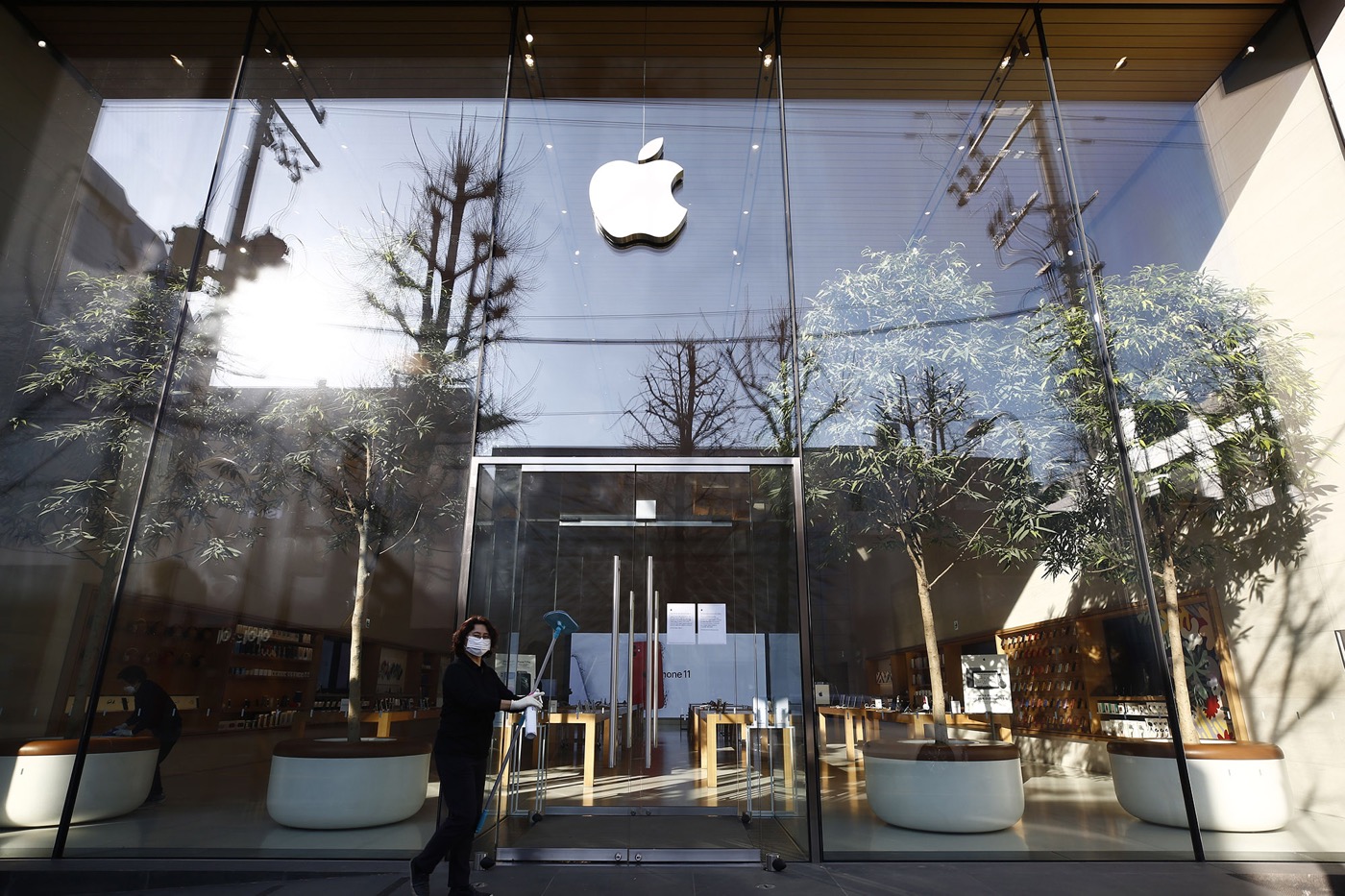Asus Zenfone 8 review: small, but strong!
High-end devices are mostly smartphones with large screens. Only Apple with its iPhone Mini has broken the rule and even if Xiaomi attempted a foray into the segment of “compact” devices in 2019 with the Mi 9 SE, this ended in a semi-failure since the company no. he never released devices in this ephemeral “Small Edition” range. As a leader in the mobile gaming segment, Asus is trying to stand out with its other devices. In previous years, the Zenfones were the only ones to offer 5000 mAh batteries (while it was far from the standard in 2017) or this famous “Flip” camera since 2019 on its Zenfone 6 and Zenfone 7.
This year we are entitled to two Zenfone 8. The “Flip” therefore, and the “short” which also stands out for its size with a diagonal of 5.9 inches (15 cm) while devices over 17 cm are legion. In this category, it is the only one with the Pixel 5 to offer this rather reduced size. At Apple there is also the iPhone 12 mini, but hey it’s an iPhone: closed and tasteless. The Zenfone 8 was released in May 2021 at a price of 699 € for the 8 + 128 GB version and 819 € for 16 + 256 GB (but it can of course be found at € 624 at Rakuten). Let’s see if he keeps his promises …
Contents
A perfect grip
With its 169 grams and its small size (14.8 x 6.8 x 0.9 cm) it is a device that fits perfectly in the palm and can be used easily with one hand. We can blame it for its rather basic design, but what is most annoying is that this little devil heats up quickly. It is not crippling either, but during a video session, game or stream, the heat is felt. But it must be said that with its powerful SoC, its small size and the absence of an elaborate cooling system, it could have been worse. Note however that it is never really painful and that in navigation or reading mode, there is nothing to report.
The Zenfone 8 offers stereo sound, a fingerprint sensor under the screen, a jack on the upper edge and three microphones including the one on the back which allows to capture the sound of a subject in an optimal way. It also displays a notification LED on the lower edge, which is very practical when the device is placed face down on a table. Finally, it is IP68 certified and offers compatibility with WiFi 6E, this new WiFi standard which is in fact an improvement of 802.11 ax. More to the point, you die.
A 120 Hz OLED screen that is not “small”
We already said at the start of this test: the screen of the Zenfone 8 is only 5.9 inches, or a little less than 15 cm. It’s not that “compact” if we compare its size with devices from 2014 or 2015, but for us who are used lately to test smartphones with screens of 16.8, 17 or even 17, 5 cm, this reduced size requires a moment of adaptation … But it ends up seducing. Not only is the handling good, but it doesn’t penalize the user at all when it comes to using apps, browsing, reading or even watching an episode of Rick and Morty on Netflix. Small size does not mean discount screen. Here we are entitled to a very well calibrated OLED panel of 445 DPI with a refresh rate of 120 Hz. The small size de facto reduces reflections and the maximum brightness is excellent. Nothing to say on the side of the screen therefore.
Unprecedented performance on a “compact”
While devices that risk on this reduced size never have the best components (the Pixel 4a 5G and 5 only embed Snapdragon 765G for example), Asus has gone all out with the Qualcomm Snapdragon 888: the same chip as on its ROG Phone 5, the OnePlus 9 Pro or the Xiaomi Mi 11. With 8 or 16 GB of RAM, it’s still inflated! Asus has even gone so far as to offer the same “gaming” menu as on its latest ROG Phone. Attention, even powerful, it is a device which is not too suitable for the game in competition because of the punch on the screen and the absence of a cooling system worthy of the name. But for small parts in the metro, this is the best. We feel the know-how of Asus behind this Zenfone 8. It is a concentrate of power, a pocket UFO.
He does the job in pictures
No telephoto lens for the Zenfone 8! This is not really a problem since he is not the only one in this category. No “macro gadget” module either and that’s good news. There is therefore a Sony IMX686 64 megapixel main lens and a 12 MP IMX363 ultra wide-angle lens. The least we can say is that the HDR is on full blast. It is quite contrasted, but it is not more annoying than that. The results are better in 64 MP mode (by default the device takes 16 MP shots with pixel binning): more detailed and less artificial. However, good light conditions will be needed to take full advantage of it. Even without optical zoom, it is still possible to crop quietly. The default 16 MP setting is “all terrain”. It is successful even if there is sometimes a lack of sharpness.
It’s not a Pixel 5, but the Zenfone 8 offers daytime shots close to the OnePlus 9 or the Mi 11. Night mode is very good as long as you stay still. Artificial lights are not an obstacle. It’s yellowish, but we’re used to it in these circumstances.
Note also that the night mode is activated automatically and that it is possible to ignore it, which is not the case on all devices. Ultra wide-angle also forces HDR while having the drawbacks inherent in this type of focal length: distortion, few details at the periphery and digital noise in difficult lighting conditions. It is still at the level of high-end devices of the moment. To put it simply, the Zenfone 8 is not a device that we will choose for its photo part, but it will never disappoint you. This is all the more true as the portrait mode is very good with its simulated aperture to choose the intensity of the blur in the background.
In selfie mode, the punch houses a 12 megapixel module that does the job even if it is not really a device to recommend to Kévina. For video, 1080p at 60 fps with HyperSteady mechanical stabilization works wonders. In 4K 60 fps, EIS stabilization will take over (an electronic process that compensates for movement). But the Zenfone 8 also offers 8K EIS at 24 fps: like the Galaxy S21 Ultra.
Autonomy in withdrawal
Well, this Zenfone 8 had to have a fault … If Asus is used to taking care of its batteries, here the Taiwanese firm could only store a 4000 mAh battery. And with a Snapdragon 888, that’s not much. In intensive use you will have to fight to finish the day. During our test period, we were still able to finish the day without sacrificing 120 Hz. We will have to bet on the dark mode, avoiding playing or putting too much strain on the screen. Another downside, the fast charge only offers 30 W which is a bit light for a device of this standard: the battery goes from 5 to 82% in one hour. It will take 1h23 for a full charge. The Zenfone 8 offers all the smart battery options of the latest ROG and Flip.
Our verdict:
The Zenfone 8 is a unique device. While techies who want a compact smartphone with the best components never found what they were looking for, they now have Asus’ baby at their fingertips. Xiaomi had not succeeded with its Mi 9 SE because it had perhaps not gone to the end of the “delirium” by offering an SoC a notch below what was done at the time (a Snapdragon 712 instead of an 855). Here Asus signs a powerful and compact device with a very beautiful screen. The photo aspect is more than satisfactory. If some people regret the lack of a telephoto lens, we will tell them that the Pixel 5 does not have one either and that it is not disabling. Finally, the 4000 mAh battery is a bit “fair” with its day’s autonomy. If you want a powerful, one-handed device that takes great photos, go for it!
The best prices for the Asus Zenfone 8
Shooting tests
Technical characteristics of Asus Zenfone 8
► Dimensions:
Height: 148 mm
Width: 68.5mm
Thickness: 8.9mm
► Screen: AMOLED 5.9 inches (15 cm) 120 Hz
► Weight: 169 g
► Battery: 4000 mAh with 30 W load
► OS: Android 11 + ZenUI 8
► Memory: 8 or 16 GB of LPDDR5 RAM + 128 or 256 GB of UFS 3.1 storage
► Connectivity:
802.11a / b / g / n / ac Wi-Fi
Usb-c
Fingerprint sensor under the screen
Bluetooth 5.2
NFC
3.5mm jack
5G
Dual-SIM (or nano SIM + microSD)
► Processor: Qualcomm Snapdragon 888, 5 nm, 8 cores (2.84 GHz max)
► GPU: Adreno 660
► Camera: Sony IMX686 64 megapixel main sensor (f / 1.73 – 26.6 mm film equivalent) with optical stabilization, ultra wide-angle 12 MP (f / 2.2 – 14.3 mm) + a 12 MP (f / 2.45 – 27.7 mm) at the front.
► Resolution: 445 DPI
► Definition: 2400 x 1080 pixels
► Video: 8K at 24 fps, 4K at 60 fps, or 1080p at 60 fps with HyperSteady stabilization
► Release date: May 2021
► Site: https://www.asus.com/fr/Mobile/Phones/ZenFone/Zenfone-8/
The best prices for the Asus Zenfone 8
The notes of the Asus Zenfone 8:
- Performance – 9/10
- Design – 8/10
- Screen – 9/10
- Photo – 7/10
- Autonomy – 6/10
- Price quality – 8/10
7.8 / 10
Most :
► Unique with its small size and powerful SoC
► Very nice screen
► IP68 + jack plug!
The lessers :
► Autonomy could have been a bit better
► No fast charging



